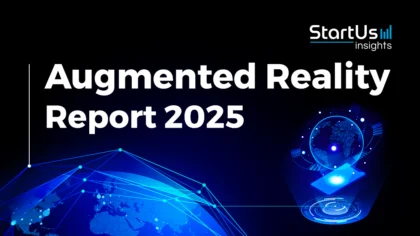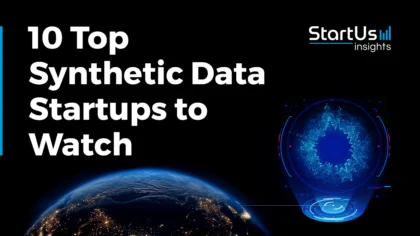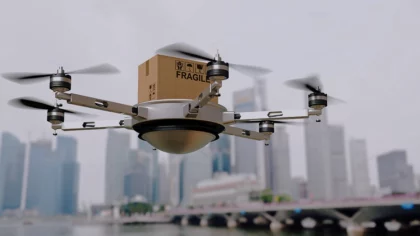Accelerate Productivity in 2025
Reignite Growth Despite the Global Slowdown
The 2025 Cybersecurity Report examines how rising digital threats, cloud-first strategies, and identity-centric frameworks are improving enterprise security. From the swift rise of ransomware protection and the growing complexity of cloud cybersecurity to the surge in zero-trust architecture adoption, these core trends are redefining how organizations defend their data and operations.
This cybersecurity outlook delivers a focused analysis of threat evolution, market growth, and innovation hotspots, offering critical insights for cybersecurity leaders and strategic investors navigating today’s high-stakes digital landscape.
Executive Summary: Cybersecurity Market Outlook 2025
- Industry Growth Overview: The cybersecurity market size is anticipated to reach around USD 644.4 billion by 2033, expanding at a compound annual growth rate (CAGR) of 8.9% over the forecast period 2025 to 2033. On a granular level, the cybersecurity market has experienced a growth rate of 2.11% over the past year, as per the Discovery Platform’s latest data.
- Manpower & Employment Growth: The cybersecurity market employs over 24 million individuals globally, with an increase of 1.4 million+ new jobs added in the last year.
- Patents & Grants: The cybersecurity market features over 378 500 patents and 17 190 grants. The patent growth rate is 6.97% yearly, with China and the US leading in patent issuance.
- Global Footprint: Key hubs for cybersecurity include the US, Germany, the UK, India, and Canada, showcasing a diverse global infrastructure supporting market growth. Major city hubs encompass London, New York City, Singapore, Berlin, and Dubai.
- Investment Landscape: The average investment value per funding round exceeds USD 86.5 million, with over 64 350 funding rounds closed. More than 40K investors are actively engaged in the cybersecurity market.
- Top Investors: Major investors include European Investment Bank, Apollo, Thoma Bravo, Goldman Sachs, and more are collectively investing over USD 53.4 billion across numerous companies.
- Startup Ecosystem: Five innovative startups, HackerStrike (zero-day ransomware attacks detection and prevention), Cloud9 (cognitive threat assessment and management suite), CyberTide (AI-based data leak prevention platform), ProNoesis (identity & access management), and Mercurius (cybersecurity diagnostics and digital fraud prevention) showcase the market’s global reach and entrepreneurial spirit.
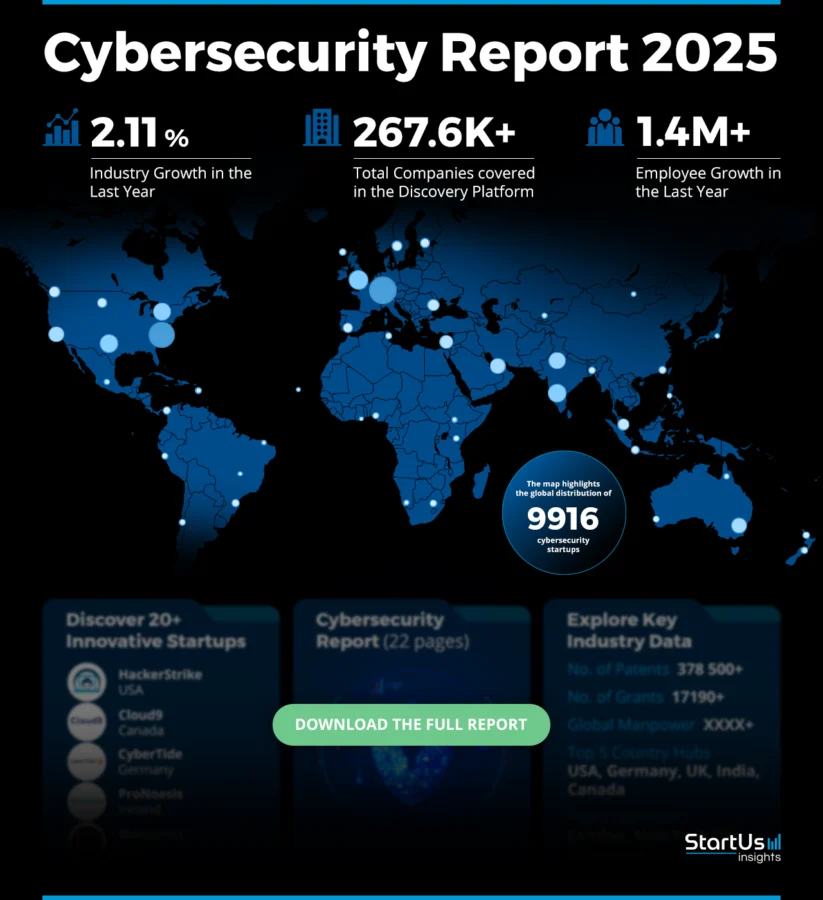
Methodology: How We Created This Cybersecurity Report
This report is based on proprietary data from our AI-powered StartUs Insights Discovery Platform, which tracks 7 million global companies, 20K+ technologies and trends as well as 150M patents, news articles and market reports. This data includes detailed firmographic insights into approximately 7 million startups, scaleups, and tech companies. Leveraging this exhaustive database, we provide actionable insights for startup scouting, trend discovery, and technology landscaping.
For this report, we focused on the evolution of cybersecurity over the past 5 years, utilizing our platform’s trend intelligence feature. Key data points analyzed include:
- Total Companies working in the sector
- News Coverage and Annual Growth
- Market Maturity and Patents
- Global Search Volume & Growth
- Funding Activity and Top Countries
- Subtrends within cybersecurity
Our data is refreshed regularly, enabling trend comparisons for deeper insights into their relative impact and importance.
Additionally, we reviewed trusted external resources to supplement our findings with broader market data and predictions, ensuring a reliable and comprehensive overview of the cybersecurity market.
What Data is Used to Create This Cybersecurity Market Report?
Based on data provided by the StartUs Insights Discovery Platform, we observe that the cybersecurity market stands out in the following categories relative to the 20K+ technologies and trends we track.
These categories provide a comprehensive overview of the market’s key metrics and inform the future direction of the market.
- News Coverage & Publications: The cybersecurity market has been featured in over 65 680 publications in the last year, which showcase major media attention.
- Funding Rounds: More than 64 350 funding rounds have been recorded in our database for this sector.
- Manpower: The global workforce in cybersecurity exceeds 24 million, with an additional 1.4 million+ employees added in the past year alone.
- Patents: The cybersecurity market has more than 378 500 patents.
- Grants: Over 17 190 grants have been awarded to companies within the cybersecurity market.
- Yearly Global Search Growth: The cybersecurity market has experienced a yearly global search growth of 61.88%.
Explore the Data-driven Cybersecurity Market Report for 2025
According to IMARC Services, the global cybersecurity market size reached USD 299.6 billion in 2024 and is expected that the cybersecurity market will reach USD 644.4 billion by 2033, exhibiting a CAGR of 8.9% during 2025-2033.
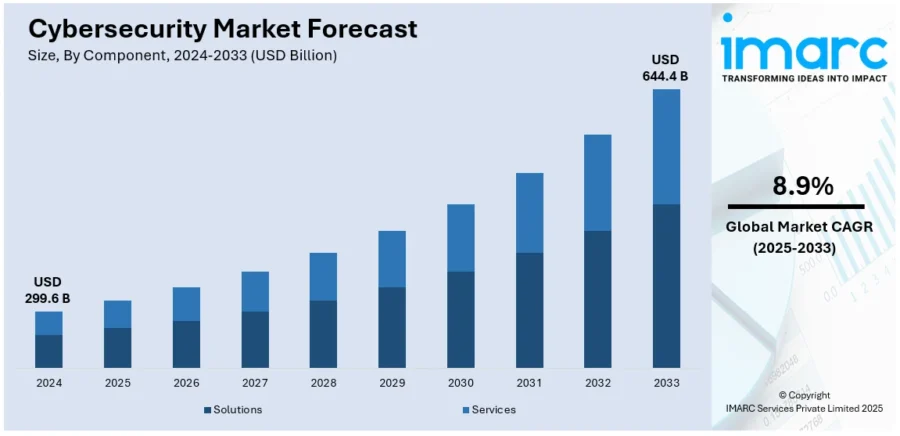
Credit: IMARC
The cybersecurity report 2025 uses data from the Discovery Platform and encapsulates the key metrics that underlie the sector’s dynamic growth and innovation. Our database features 9910+ startups and over 267 630 companies, which reflect the market’s vast scope despite an annual growth of 2.11%. It also highlights over 378 500 patents and 17 190 grants.
Moreover, the global cybersecurity market size was estimated at USD 245.62 billion in 2024 and is projected to grow at a CAGR of 12.9% from 2025 to 2030.
Additionally, with a global workforce exceeding 24 million and 1.4 million new employees added last year, the cybersecurity market’s talent pool remains robust. Major hubs include the US, Germany, the UK, India, and Canada, while cities like London, New York City, Singapore, Berlin, and Dubai stand out as vibrant epicenters of cybersecurity activity.
A Snapshot of the Global Cybersecurity Market
Over the past year, the cybersecurity market has been evolving at a 2.11% annual growth rate, driven by early-stage innovation and patent activity. With over 9410 startups, most in early stages, and more than 8860 M&A deals, the cybersecurity landscape reflects both dynamism and consolidation.
Patent filings exceed 378 500 globally, with over 93 500 applicants, although yearly growth in filings remains at 6.97%. Further, the USA and China lead the cybersecurity innovation front, issuing 151 040+ and 82 590+ patents, respectively.
Explore the Funding Landscape of the Cybersecurity Market
With over 40K investors backing more than 18 880 companies across 64 350 funding rounds, the cybersecurity sector demonstrates strong financial momentum. The average investment exceeds USD 86.5 million per round.
This surge in capital aligns with a broader ecosystem of 9410+ early-stage startups and 8860+ merger and acquisition (M&A) activities. As funding improves and global patent activity surpasses 93 500 filings, the cybersecurity space is positioned for innovation-led growth.
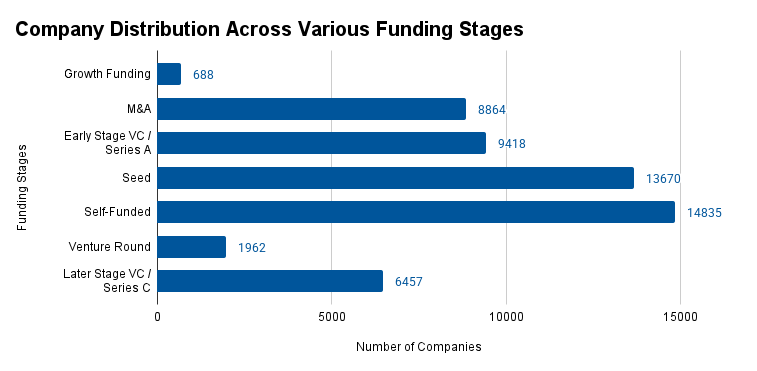
Who is Investing in the Cybersecurity Market?
The combined investment value of the top investors in the cybersecurity market exceeds USD 53.4 billion. Here is a breakdown of their contributions:
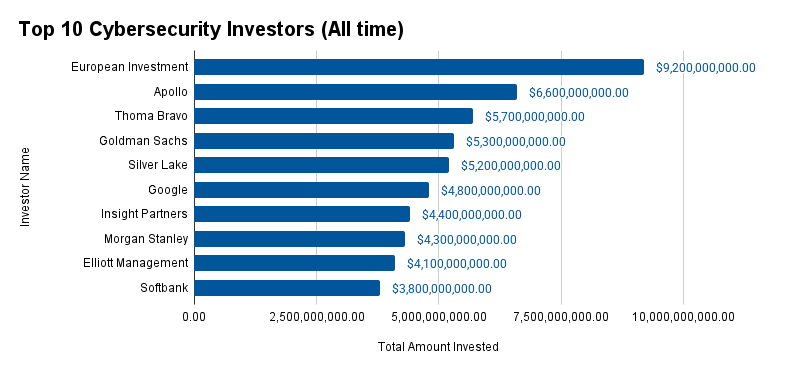
- European Investment Bank has committed USD 9.2 billion to 42 companies. The EIB and partners launched a EUR 216.5 million fund to improve Chile’s renewable hydrogen industry.
- Apollo has supported 16 companies with USD 6.6 billion. Apollo committed up to USD 400 million in a joint venture with Summit Ridge Energy to operate commercial solar assets across Illinois.
- Thoma Bravo has backed 21 companies with USD 5.7 billion. Thoma Bravo agreed to acquire parts of Boeing‘s Digital Aviation Solutions, including Jeppesen and ForeFlight, for USD 10.55 billion.
- Goldman Sachs has invested USD 5.3 billion in 87 companies.
- Silver Lake has committed USD 5.2 billion to 14 companies. Silver Lake acquired a 51% stake in Intel’s Altera unit for USD 4.46 billion.
- Google has supported 44 companies with USD 4.8 billion. Google partnered with Elementl Power to fund three US nuclear sites, each generating 600 MW.
- Insight Partners has backed 114 companies with a total of USD 4.4 billion. Insight Partners led a USD 25 million Series A extension for Reco, an AI-native SaaS security company.
- Morgan Stanley has committed USD 4.3 billion to 48 companies. Morgan Stanley partnered with Wise to offer its corporate clients instant cross-border settlements via Wise’s global payments network.
- Elliott Management has invested USD 4.1 billion in 13 companies.
- Softbank has supported 32 companies with USD 3.8 billion. SoftBank committed to investing USD 3 billion annually to deploy OpenAI‘s solutions across its group companies, including Arm and PayPay.
Top Cybersecurity Innovations & Trends
Discover the emerging trends in the cybersecurity market along with their firmographic details:
- Zero Trust Security is at the forefront of cybersecurity innovation, with over 2770 companies employing more than 240K professionals globally. In the past year alone, the domain added over 25K new roles, reflecting its rapid expansion. Zero Trust Security is improving access control by eliminating implicit trust and verifying every access request. With an annual growth rate of 21.8%, zero trust security improves protection against cyber threats.
- Ransomware Protection encompasses over 4400 companies and a workforce exceeding 155K employees worldwide. The addition of 16 800 new positions in the last year highlights the demand for defense mechanisms against ransomware attacks. Growing at 18.49% annually, this domain develops advanced solutions to detect, prevent, and respond to ransomware while protecting organizational data and operations.
- Cloud Cybersecurity domain has more than 8480 companies and a global workforce of approximately 678 300 professionals. The segment welcomed 57 100 new employees in the past year, highlighting the ongoing shift towards cloud-based infrastructures. Cloud cybersecurity, growing at 6.39% annually, remains essential for securing cloud environments, protecting data, and ensuring compliance.
5 Top Examples from 9900+ Innovative Cybersecurity Startups
The five innovative startups showcased below are picked based on data including the trend they operate within and their relevance, founding year, funding status, and more. Book a demo to find promising startups, emerging trends, or industry data specific to your company’s needs and objectives.
HackerStrike enables Zero-day Ransomware Attacks Detection & Prevention
US-based startup HackerStrike offers RansomStrike, a cybersecurity platform that detects and stops zero-day ransomware attacks.
RansomStrike uses machine learning algorithms to continuously analyze system metadata and identify abnormal behaviors that signal ransomware activity.
Moreover, the platform bypasses traditional signature-based antivirus methods by relying on behavioral analysis to intercept novel threats in real time.
It also integrates with existing security infrastructures or operates independently to provide adaptable protection against evolving cyber threats.
HackerStrike further leverages continuous learning systems and AI-based models to prevent data loss and reduce downtime. This method establishes a proactive defense against ransomware attacks.
Cloud9 develops Cognitive Threat Assessment & Management Suite
Canadian startup Cloud9 designs a cognitive threat assessment and management platform that automates and streamlines cybersecurity operations.
The platform uses a cyberintelligence engine to classify incidents, identify affected assets, and prioritize real-time responses, which reduces reliance on manual analysis.

Moreover, the platform integrates into existing development workflows to detect vulnerabilities early in the software development lifecycle and prevent exploitable weaknesses in final products.
Cloud9 also simulates threats such as ransomware and data breaches to allow organizations to identify and address vulnerabilities before exploitation.
Further, the platform includes features such as blast radius identification and automated governance for real-time insights and incident response. It also offers asset management for continuous monitoring and threat anticipation.
CyberTide designs AI-based Data Leak Prevention Platform
German startup CyberTide develops an AI-powered data security platform that unifies data loss prevention, insider threat protection, and data security posture management into a single solution.
The platform scans structured and unstructured data across cloud services, collaboration tools, and AI applications. It also uses context-aware algorithms to classify sensitive information and enforce security policies in real time.

Additionally, the platform achieves major detection accuracy, minimizes false positives, and supports self-hosted deployment to give organizations full control over data security.
CyberTide continuously monitors data flows and user behavior to allow organizations in regulated industries such as finance and healthcare to prevent data leaks and mitigate insider risks.
It also ensures compliance with standards like GDPR, DORA, and ISO 27001.
ProNoesis streamlines Identity & Access Management
Irish startup ProNoesis provides an enterprise-grade access management platform that secures authentication and authorization across on-premises, cloud, and hybrid environments.
The platform integrates federated single sign-on (SSO), multi-factor authentication (MFA), and adaptive risk-based controls to authorize access to applications and application programming interface (APIs).
Moreover, the platform supports industry standards such as SAML, OAuth, and OpenID Connect, and uses proxy modules and gateways to accommodate legacy systems.
It also includes just-in-time provisioning, centralized account administration, and API access management to reduce manual overhead and strengthen security posture.
ProNoesis further unifies identity lifecycle management with real-time policy enforcement to minimize insider threats, ensure regulatory compliance, and deliver policy-driven access control.
Mercurius offers Cybersecurity Diagnostics & Digital Fraud Prevention
Chile-based startup Mercurius develops a cybersecurity ecosystem that integrates offensive security testing, threat response, and secure development practices to protect digital infrastructures.
It’s Red Team as a Service simulates real-world attack scenarios and uncovers vulnerabilities across networks, applications, and cloud environments.
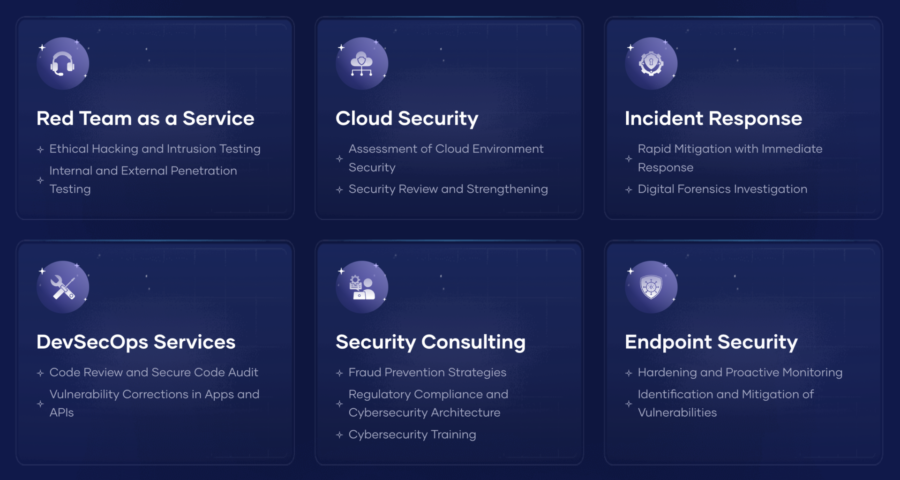
Additionally, the startup conducts internal and external penetration tests, performs cloud security assessments, and audits secure code to identify and remediate security gaps.
It also provides incident response and digital forensics services to mitigate breaches and analyze threat vectors.
Further, Mercurius combines proactive testing with rapid response capabilities to strengthen organizational resilience against cyber threats.
Gain Comprehensive Insights into Cybersecurity Trends, Startups, and Technologies
In 2025, the cybersecurity landscape is improving rapidly as AI-powered threats, quantum-era risks, and expanding digital perimeters redefine enterprise defense needs. The integration of privacy-enhancing computation, autonomous threat detection, and secure access service edge (SASE) architectures is shaping the future of cyber resilience. As organizations move toward zero-trust frameworks and decentralized infrastructures, cybersecurity will become foundational to every digital interaction.
Get in touch to explore 9910+ startups and scaleups, as well as all market trends impacting 267 630+ cybersecurity companies worldwide.

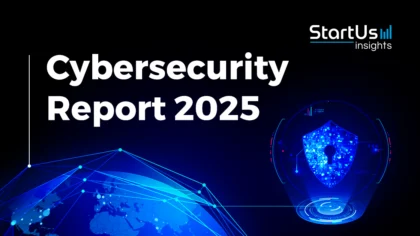

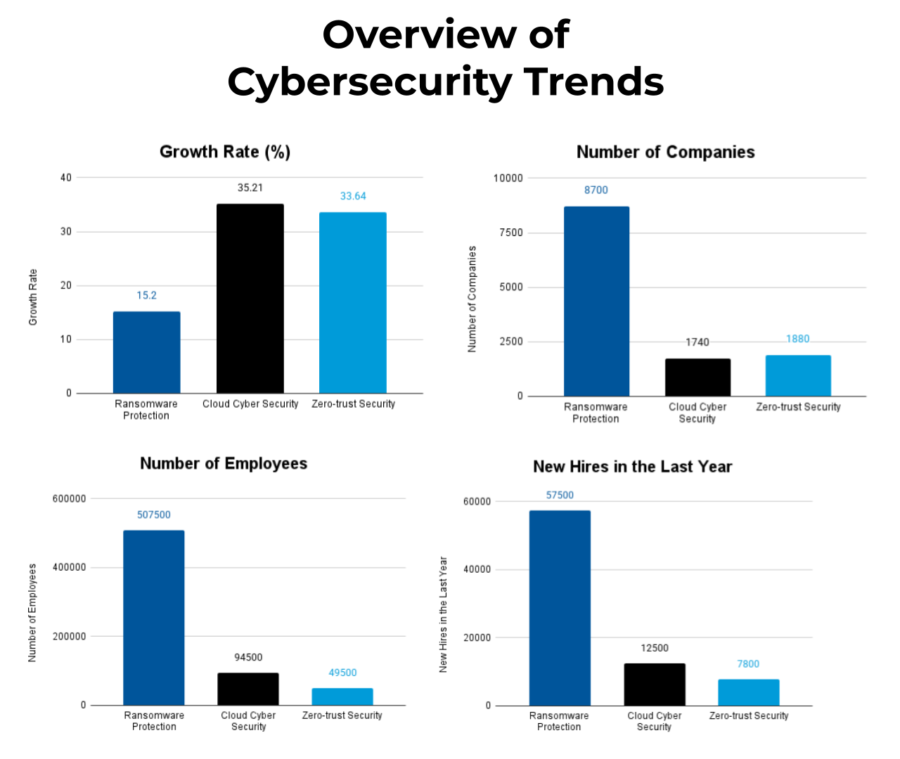
![10 Top Digital Twin Startups and Companies for Industry 4.0 [2025]](https://www.startus-insights.com/wp-content/uploads/2025/06/Digital-Twin-Startups-for-Industry-4.0-SharedImg-StartUs-Insights-noresize-420x236.webp)
